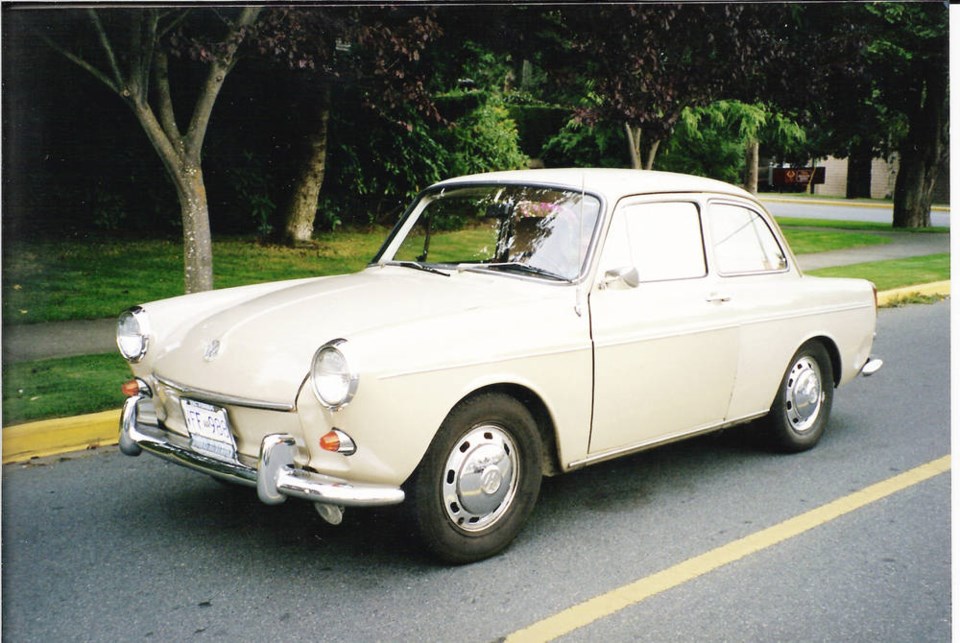Although it was conceived as a low cost ŌĆ£peopleŌĆÖs carŌĆØ in the 1930s by Ferdinand PorscheŌĆÖs Design Office on a commission from the Hitler government, the rear engine Volkswagen Beetle became an evergreen design.
It was produced in a huge government-built factory completed in 1938 in Wolfsburg, State of Lower Saxony. Production was soon interrupted by the Second World War and serious VW output didnŌĆÖt begin until after the war. During the war VW- based Jeep-type Kubelwagens were built.
Beetles were also manufactured in other locations, including Mexico, and when production finally ended there in July, 2003 more than 22 million had been manufactured. A new front engine, front-drive Beetle was introduced in 1998 as a kind of nostalgia model.
The first two Beetles were imported into the United States in 1949 and began arriving in greater numbers in the 1950s. Good fuel economy, fun-to-drive characteristics and robust durability backed by an excellent service network gradually increased its popularity. It soon became the top selling import and Volkswagen arrived in sa╣·╝╩┤½├Į in 1952.
As much as Heinz Nordhoff, director general of the Volkswagenwerk (VW factory) loved and was dedicated to the Beetle, it had disadvantages. It was cramped, noisy, skittish in cross winds and had limited luggage space. The heater pumping heated air from the engine into the cabin was marginal.
By the late 1950s Volkswagenwerk recognized the BeetleŌĆÖs limitations, especially for North America. The competition was getting bigger, faster and more comfortable and Beetle owners had no VW to move up to when they needed more space.
Thus in 1961 Volkswagen announced the attractive, all-new 1500 two-door notch-back sedan. It did not resemble the Beetle; it was an addition, not a replacement, but retained VWŌĆÖs traditional features.
As in the Beetle the engine was a flat, air cooled, four cylinder behind the rear axle. But whereas the BeetleŌĆÖs belt-driven air cooling fan was mounted vertically on top of the engine and driven though the generator, the 1500ŌĆÖs fan was on the end of the crankshaft. This eliminated a belt and reduced engine height to just 381 mm (15 in.) allowing a shallow trunk above the engine to augment the underhood one.
It was a more elegant solution than the Chevrolet CorvairŌĆÖs horizontally mounted fan rotated by a contorted drive belt twisting in four different directions. The 1500ŌĆÖs oil cooler was mounted horizontally not vertically as in the Beetle. A side draft carburetor also contributed to lowness.
Suspension was VWŌĆÖs four-wheel independent, torsion bar type, but instead of Dr. PorscheŌĆÖs centrally anchored laminated lateral front torsion bars, the 1500 had solid bars anchored at opposite sides of the car.
Rear suspension was similar to the BeetleŌĆÖs with swing axles, short lateral torsion bars and trailing arms. The track was 58 mm (2.3 inches) wider than the BeetleŌĆÖs but its wheelbase was the same 2400 mm (94.5 in.). It weighed 889 kg (1,960 lb) compared with the BeetleŌĆÖs 758 (1,670).
As its name implies the 1500 had a 1.5 litre (1,493 cc) engine while the Beetle had only 1,192 cc. It was an all-new design developing 53 horsepower compared with the BeetleŌĆÖs 40. Both used an all-synchromesh four-speed overdrive transmission, allowing VW to continue advising owners that ŌĆ£the top speed is the cruising speed.ŌĆØ
The engine was accessible by raising the trunk floor, but the oil dipstick and filler could be accessed without disturbing the luggage. As with the Beetle, the engine could be lowered out of the bottom of the car in a few minutes.
In spite of the new modelŌĆÖs extra power over the Beetle Road & Track (5/62) found its acceleration wasnŌĆÖt much quicker. They recorded zero to 97 km/h (60 mph) in 24.0 seconds for the 1500, and 27.7 for the Beetle. The 1500 was considerably faster in top speed however: 133 km/h (82.4 mph) versus 115 (71.4).
The 1500 would come as a notchback sedan, fastback sedan and squareback (station wagon), also called the Variant.
In 1965 engine size was increased to 1,584 cc (96.6 cu in.) raising horsepower to 65. R & T (1/66). They found that while the 1600ŌĆÖs top speed was the same as before, the zero to 97 (60) acceleration was now a more respectable 18.9 seconds.
The 1500 began arriving in North America in 1962, with the 1600 coming in 1965 as a ŌĆś66 model. The 1500 lasted through to 1968 and the 1600 to 1973. The 1600 had the distinction of introducing the first electronic fuel injection in 1968. The 1600 was replaced by the larger but rather short-lived 411 model.
Ironically, while it was bigger, faster and more stylish than the Beetle, and offered in a variety of body configurations, the VW 1500/1600 was outlasted by the ubiquitous, and by now iconic, Beetle.



